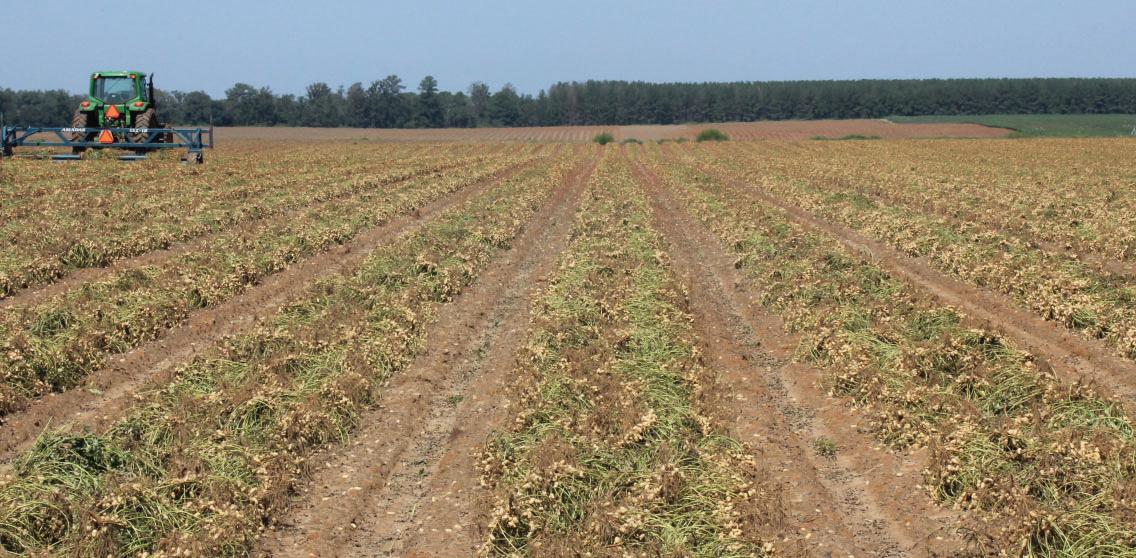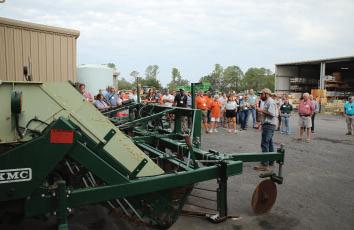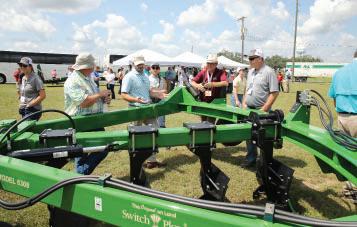






Turner County Extension and 4-H members bridge the gap between agriculture and the public by a service project at the Peanut Monument. 22 |
The American Peanut Council presented awards at the annual USA Peanut Congress in June.

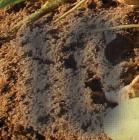
The
dig, how


The Summer Peak
As summer reaches its peak and the peanut rows stretch out like a green blanket across the fields, anticipation grows for what is below the ground and the bountiful harvest yet to come. That same anticipation has been building for almost three years now with a farm bill or some type of relief for farmers.
The One Big Beautiful Bill was passed by Congress and signed by President Donald Trump on July 4. The final legislation includes meaningful provisions for the peanut industry, including an increase in the reference price for the Price Loss Coverage (PLC) program, a voluntary base acres update, a marketing loan increase, and modified payment limitations that reflect increased costs of production.
This legislation comes at a crucial time for many farmers who are trying to make ends meet, repay loans and secure future financing. The peanut industry has struggled over the past several years due to increases in farm inputs, labor shortages and trade barriers. The legislation addresses the ongoing discussions peanut industry leaders have had with elected officials about the challenging economic conditions.
The legislation did not just happen overnight. It has taken two and a half years of work through phone calls, letter writing, meetings, Capitol Hill visits, education and more. Be sure to thank your elected officials for helping agriculture at a critical time.
The summer months also provide a critical time for farmers to continue monitoring their crop with their fungicide program, insect control, and more. This time also allows farmers time to get prepared for harvest by checking their harvest equipment in advance. This issue includes information for farmers as they prepare for harvest.
The summer also brings the annual Southern Peanut Growers Conference in July. The 26th annual event brings growers and industry representatives together for a three-day event that provides education with plenty of time for fun in the sun! If you cannot attend this year's conference, I encourage you to check out the presentations online at southernpeanutfarmers.org following the event.
As the summer winds down, fall is just around the corner and the lush green rows of peanuts are finally ready for harvest. I wish for you a rewarding season with a bountiful harvest in 2025.

Joy Carter Crosby SEPF Editor
Dates of upcoming field days are on page 18.
American Peanut Shellers Association and National Peanut Buying Points Association Pre-Harvest Meeting
Aug. 19-20, 2025, Albany, Ga. For more information call 229-888-2508 or visit peanut-shellers.org.
Brooklet Peanut Festival
Sept. 20, 2025, Brooklet, Ga. For more information visit the festival's website at brookletpeanutfestival.com.
Plains Peanut Festival
Sept. 27, 2025, Plains, Ga. For more information call visit the festival's website at jimmycarterfriends.org.
Georgia National Fair
Oct. 2-12, 2025, Perry, Ga. For more info visit georgianationalfair.com.
Sunbelt Ag Expo
Oct. 14-16, 2025, Moultrie, Ga. For more info visit sunbeltexpo.com.
Georgia Peanut Festival
Oct. 18, 2025, Sylvester, Ga. For more information call visit the festival's website at gapeanutfestival.org.
Florida Farm Bureau Annual Meeting
Oct. 27-29, 2025, Hilton Daytona Beach Oceanfront Resort, Daytona Beach, Fla. For more information visit floridafarmbureau.org.
National Peanut Festival
Oct. 31 - Nov. 9, 2025, Dothan, Ala. For more info visit the website at nationalpeanutfestival.com.
Georgia Farm Bureau Annual Meeting
Dec. 7-9, 2025, Jekyll Island, Ga. For more information visit gfb.org.
American Peanut Council's Insights Summit
Dec. 10-11, 2025, Washington, D.C. For more info visit peanutsusa.com.
Let us know about your event. Please send details to the editor at joycrosby@gapeanuts.com.
























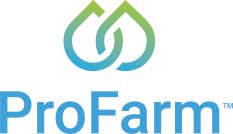





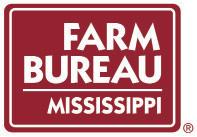













by Kaycee Rippey


Crop dusting is an unconventional career. It requires pilots of specialized aircraft to spray crop protection products over farm fields to enhance the health of the crops. However, the business of crop dusting isn't well understood by those outside of the agriculture community, which often leads to confusion and misinformation with the public. This form of precision agriculture is
efficient and sustainable, as farms look to minimize environmental impact. Marcus Crutchfield was called to be a crop duster, but his path to becoming a pilot wasn't a straight road, and now an element of danger is often involved in his daily operations.
Crutchfield graduated from high school in 2016 and went to work for Reggie Odom at Odom Farms in Jay, Florida. He began classes at Pensacola State College to become
an agricultural chemical salesman but decided to change directions and attend electrician school instead. While pursuing a certification as an electrician, he continued working on the farm.
The Odoms owned a 1978 Cessna AGwagon, which attracted Crutchfield's attention daily.
"The airplane was staring at me every day," Crutchfield says.
"I take pride in helping peanut farmers because I know how much effort goes into growing them. My favorite part of the job is the interaction with farmers."
Marcus Crutchfield
Even after becoming an electrician in 2019, he aspired to reach greater heights. In 2020, Crutchfield began flight lessons in Milton, Florida. In October of 2021, he worked with Matt Peed to complete his primary training and began the agricultural training in Blakely, Georgia. By the end of 2021, his work in aerial application took off. He went from being a full-time electrician to working as a pilot and farm hand with the Odoms.
In 2022, a new opportunity arose to join Gentry Smith and his team of crop dusters. Gentry Flying Service is based in Prattville, Alabama, but operates and provides aerial applications all over the country. Crutchfield is now the pilot of an AT-502, also known as an air tractor, which can hold 500 gallons of fluid. A full day of flying this equipment covers approximately 2,000 acres of land on farms nationwide.
As with all farm equipment, safety is a major concern for Crutchfield.
"When you're flying an airplane, you're referencing a GPS at 150 mph while dodging trees, power
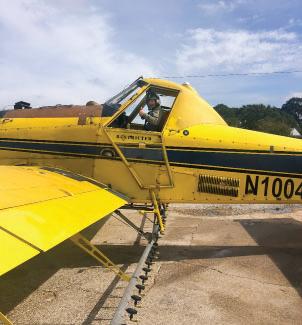

Marcus Crutchfield's day often begins before sunrise and ends well after the sun goes down. He is thankful for a supportive wife, Bailey, and daughter, Finley.
lines, and sometimes birds and bullets," Crutchfield says. "It requires hyperfocus to know what's going on inside and outside of the plane."
The general public largely misunderstands all facets of agriculture, and crop dusting is no exception. Recently, he had an unpleasant experience in Ohio when he looked out and saw a man’s face down the barrel of a gun. The man inaccurately claimed that Crutchfield was flying too close to his house. "So, I put him in jail," Crutchfield remarks.
Unfortunately, this isn't the first time he's had an issue with dodging bullets. During his first year working with Gentry Smith, Crutchfield found a bullet hole while washing his plane off at the end of the day.
"We still have no idea who shot at me, but it didn't slow us down at all. We just patched it and went on about our business," Crutchfield says.
Besides angry neighbors, Crutchfield describes other issues largely related to spraying peanut fields.
"If you have worms in a peanut field, you'll often see a lot of birds. Imagine a whole flock of 40 lb. geese flying up in front of you while you're traveling at 150 mph," he explains the stressful experience.
However, Crutchfield knows how important aerial applications are for peanuts.
"I take pride in helping peanut farmers because I know how much
effort goes into growing them," Crutchfield says. "My favorite part of the job is the interaction with farmers," he adds.
Mickey Diamond, a Florida peanut farmer, is very appreciative of the work Crutchfield and other crop dusters have done for his farm, JM Diamond Farms in Santa Rosa County.
"He's very meticulous when it comes to his airplane and spraying the field. He gets it done and he gets it done right," Diamond says. “In agriculture, everything is about timing. A crop duster can get across a field, even when it's wet."
With over 2,000 acres to farm, JM Diamond Farms utilizes aerial applicators to keep things running as smoothly as possible.
Crutchfield reiterates the importance of his job.
"We're providing a service to enhance the growth of these crops. It has a general purpose, and we use it accordingly," he says.
Growing up, Crutchfield never imagined he would fly across the country and back daily, but he wouldn't have it any other way. During the busy season, his days begin before the sun comes up and end well after the sun goes down.
"Despite its challenges, crop dusting is an exhilarating way of life because you never know what the day will bring," Crutchfield says.
The Florida Peanut Producers Association awards scholarships annually to deserving high school graduates and college students. The scholarships were presented to four students in 2025.

Shelby Brock is a resident of Chipley, Florida. Brock, a recent graduate of Chipola College with an AA degree, intends to enroll in Chipola College's Nursing Program this fall. Her educational goals include obtaining her RN and BSN from Chipola College, with the aspiration of becoming an ICU nurse. Ultimately, Brock plans to pursue her career and education further by attending Florida State University's CRNA program to become a Certified Registered Nurse Anesthetist.

J.R. Hudson, a senior at Chiefland High School in Chiefland, Florida, aspires to attend a local college to earn his Associate of Arts degree and then pursue a degree in Geomatics at the University of Florida. Hudson's vision of returning to Levy County to establish a surveying company that integrates modern technology and innovative methods is inspiring. His desire to contribute to the community by providing accurate data and efficient planning, whether it's assisting landowners or supporting infrastructure development, demonstrates a strong commitment to the growth and preservation of the county. The dedication to fighting urban sprawl by helping to keep farmland in production is a top priority.

Macy Jordan, is from Malone, Florida, and graduated from Malone High School and Chipola College in 2024. Throughout high school, she was a cheerleader, a member of the Beta Club, and involved in several extracurricular activities and community service projects. Jordan's current role as the 2024-2025 Florida FFA State Secretary further demonstrates her passion for agriculture, which she will continue cultivating while pursuing a degree in Agricultural Communications at the University of Florida this fall.

Katie Land is a 2025 graduate from Malone High School. Land plans to pursue an Associate of Arts degree at Chipola College and major in Environmental Conservation. Land aspires to become a game warden.
The Florida Peanut Producers had the opportunity to visit the UF IFAS Suwannee Valley Research Station to recognize the sixteen counties within the Suwannee River Basin. These counties are doing incredible work in environmental stewardship through the Farm Bureau CARES program, and it was great to celebrate their achievements.

During the event, FPPA grilled over 400 peanut butter and jelly sandwiches – they were definitely a crowd favorite, as always!
Florida ranks among the top agricultural states, utilizing 9.7 million acres for various crops. Notably, peanuts are grown across approximately 170,000 acres in 22 counties throughout the state.
Thank you to our Florida Welcome Centers for your work in showcasing Florida peanuts and the valuable role they play in Florida's economy and heritage during the 2025 Florida Tourism Week. Welcome centers throughout the state handed out Florida peanuts to all the visitors who stopped by.





Alabama and Florida Peanut Producers Associations promoted peanuts in Pensacola during a Blue Wahoos and Montgomery Biscuits baseball game.
The Florida Peanut Producers and Alabama Peanut Producers recently teamed up in Pensacola for a Blue Wahoos and Montgomery Biscuits baseball game in June. During the event, peanuts were highlighted on the big screen and samples were given to attendees. Alabama and Florida peanut growers were on hand to promote the consumption of peanuts during the promotion. Mr. Peanut took to the field to run across the field in a race with kids during the 7th inning. Smith Tractor set up a John Deere tractor at the peanut exhibit, which brought many fans by the exhibit for peanut samples.

The Alabama Peanut Producers Association attended the 2025 Ag Night with the Rocket City TrashPandas in Huntsville, Alabama, July 13, 2025. Baseball fans who visited the APPA table learned about how peanuts grow, peanut nutrition and received some peanut swag. The activation included a video board ad and a PSA during the game. APPA was joined by other commodity groups and agribusinesses to celebrate the agriculture industry in North Alabama.
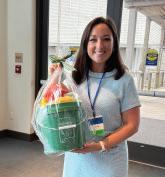
The Alabama Peanut Producers attended the Alabama Chapter of the American Academy of Pediatrics Spring Meeting on May 1-4, 2025. The meeting was held at The Lodge at Gulf Shores State Park in Gulf Shores, Alabama. APPA set up a booth and networked with pediatricians while explaining the importance of early introduction to peanuts, as well as discussing new research in peanut allergies. A raffle was held for all attendees, including prizes from each exhibit. Macy Kreitz, from Mobile, Alabama, was the winner of APPA's bucket of summer staples, including peanuts!
The Mississippi Peanut Growers Association donated complimentary bags of roasted peanuts to the American Dairy Goat Association for inclusion in the registration bags at the National Dairy Goat Show in Grand Island, Nebraska. Mississippi peanuts were also included in the Mississippi agriculture products basket to be raffled off during the show. The proceeds from the raffle go to benefit youth education programs.
The Mississippi Peanut Growers Association also donated peanuts to a three-day Agriculture Camp for youth, ages 8 - 11. One of the three days was devoted to plants and soil, including Farm to Plate recognizing peanuts from planting to eating. Both of these promotional events introduced peanuts as a healthy snack to new audiences for MPGA.

The Georgia Peanut Commission increased the size of its promotional peanut pack from 0.75 oz. to 1 oz. This new change allows the pack to be equivalent to one serving, bolstering 8 grams of protein. In addition, this new size will be offered to Georgia K-12 school nutrition programs beginning in the 2025-26 school year. The 1 oz. size is a full meat replacement and is already being sought after by Georgia school districts as a grab-and-go, local food to school, protein option. Georgia School Nutrition Association leadership received information about the new pack at their June meeting and will begin promoting it within their districts soon. GPC is excited to make peanuts more accessible to schools across the state!

Promotion of Georgia Peanuts will take to the airwaves this fall with radio ads broadcasted across multiple networks including: the Atlanta Braves radio network, Georgia Southern football radio and University of Georgia football radio. Ads across these networks reach millions of sports fans across the Southeast throughout the last half of 2025.
In addition to radio ads, peanut promotion will take place online through digital and social media, and in-stadiums through concessions and digital signage. The 5.5 ounce pack of Georgia Peanuts is available for purchase at concession athletic venues at Georgia State, Kennesaw State and at UGA’s Sanford Stadium during 2025 home games.

nowing exactly when to dig your peanuts can mean the difference between maximizing yield or leaving profits in the field.
Peanut growers need to take a more precise, hands-on approach to evaluating crop maturity. From field sampling techniques to pod blasting and weather considerations, here’s what every farmer should know before putting the digger in the ground.
"It is critical for farmers to begin checking their crop at 120 days even though we could be looking at 140 to 150 days maturity," says Scott Monfort, University of Georgia Extension peanut agronomist.
Farmers are encouraged to take a sample representative of the entire field. The sample needs to come from an area representative of the majority of the field and the soil type within the field. If the sample is not representative of the entire field, a farmer will wind up overestimating or underestimating the crop maturity.
Monfort recommends sampling
By Joy Crosby
two-foot of row out of five different places within the field. He discourages a farmer from obtaining a sample right at the pivot point or the edge of the field.
The Extension offices across the Southeast hold pod blasting clinics in county offices or regional areas for farmers to attend and bring samples. It is important for farmers to bring the entire sample, including the vines, to the pod blasting clinic instead of pulling the peanuts off the vine in advance.
"By allowing the Extension agents to see the entire vine, they can make a better decision to help farmers; especially if a farmer is having issues with disease and needs to go ahead and dig the crop up," Monfort says.
Hurricanes are also another consideration during harvest. If a farmer has peanuts ready to harvest and a hurricane is coming, Monfort recommends not digging too far before the hurricane. If a farmer digs peanuts too far ahead of the weather
event and can't harvest them, then the vines will get brittle, and a farmer will have more loss when trying to pick the peanuts. Monfort recommends digging a day or so before the hurricane, so the vines do not get brittle. Of course, he says, a farmer will have to fluff the vines before picking.
"It is always better to have rain on freshly dug peanuts than peanuts that have already dried in the field, causing the vines to get brittle," Monfort says.
Research through the years has shown that by digging too early or too late, a farmer can risk losing 500 to 1,000 pounds per acre. Once past two weeks of maturity, if the crop has been impacted from disease, peg strength or other issues, a grower could see upwards of 1,000 to 1,500 pounds per acre.
Farmers can stay prepared and ahead of the game by monitoring their field, taking a representative sample of their field for pod blasting and making informed decisions when it comes to digging and picking.
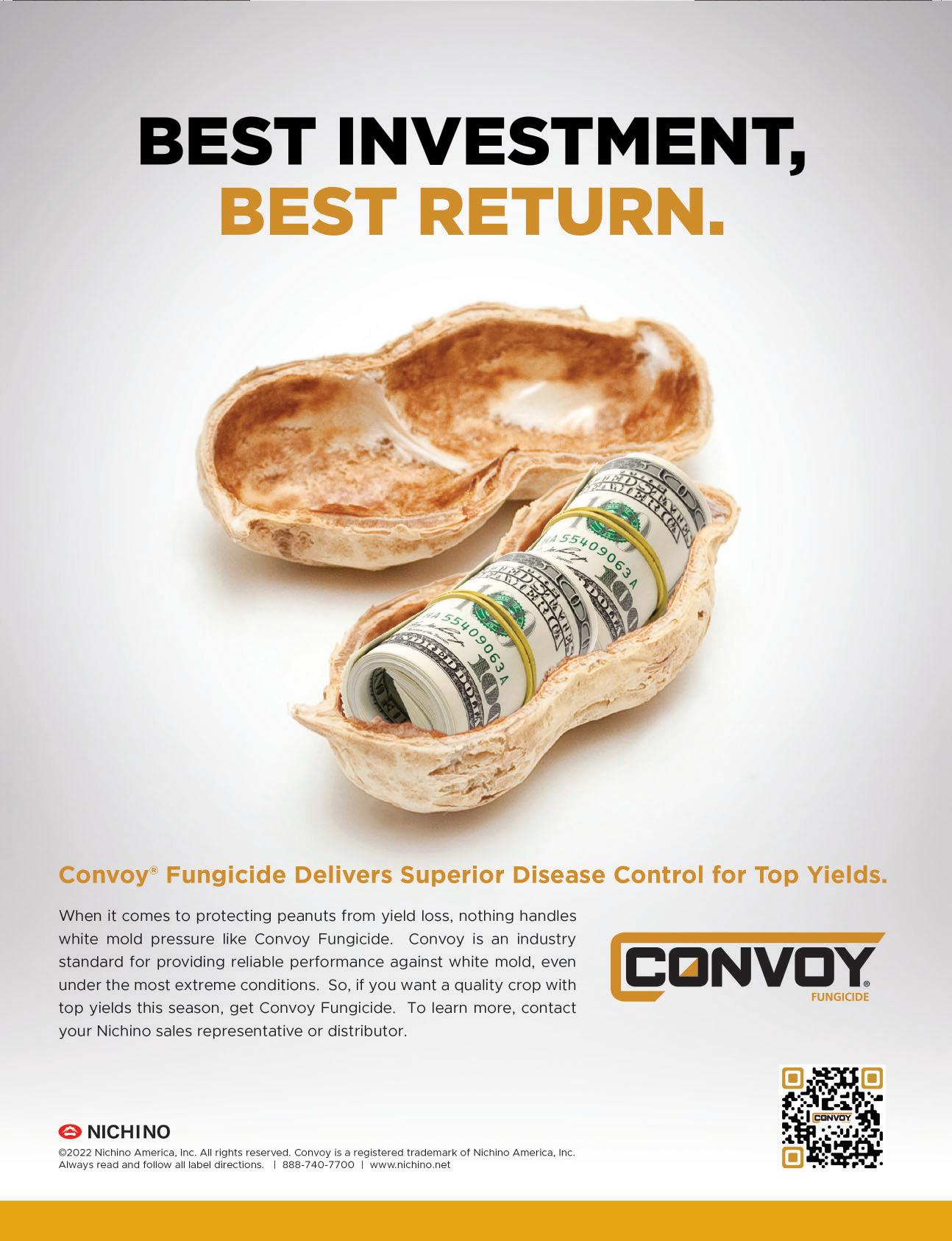
By Simerjeet Virk and Kris Balkcom Auburn University
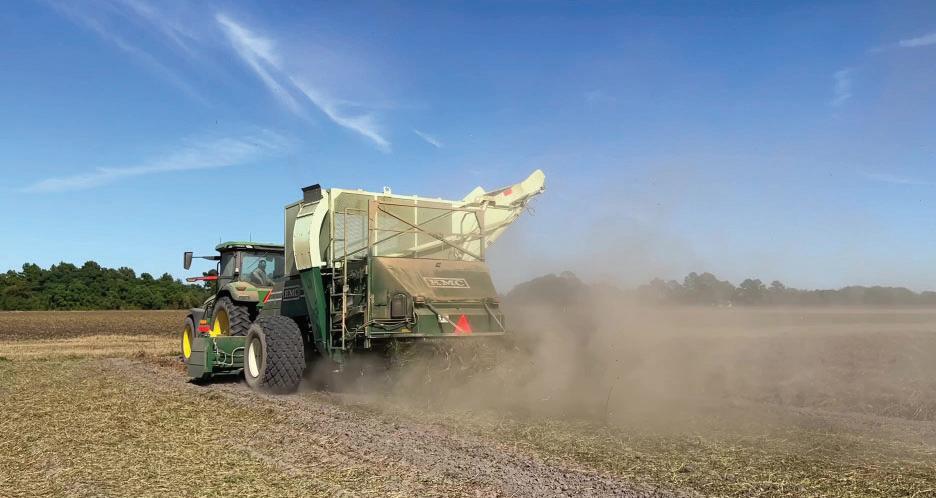
Proper setup, maintenance, and operation to peanut harvest equipment (diggershaker-inverter and combine) are important for attaining optimal in-field performance and maximizing harvest efficiency.
Improper setup and operation of the harvest equipment and prevalent crop and field conditions can incur losses during peanut harvest.
While some losses during peanut harvest are common, excessive losses can significantly reduce peanut yields and profits if not managed appropriately. Though harvest losses cannot be eliminated, they can be reduced considerably; therefore, it is important to assess and understand the level of losses so appropriate adjustments to harvest equipment settings, operational parameters, or harvest decisions can be made to keep these losses to a minimum. The following steps outline a simple
procedure for estimating losses from the number of pods on the ground after combining.
1. Measure and mark a sampling area behind the combine using a tape measure and flags or a small PVC frame (figure 1). The sampling area should be at least two rows wide by three feet long to provide an adequate estimate of harvest loss. Note that the larger the sampling area, the more accurate the loss estimation will be. Loss estimations are also more accurate when performed across the entire width of the windrow.
2. Record the length and width of the marked area or the sampling device and calculate its area in square feet. Remember, if you are measuring a certain length of the windrow, you are working with two peanut rows and
a sample width of 72 inches or 6 feet based on 36-inch row spacing.
3. Carefully count the total number of pods on the ground within the selected area (whether marked using flags or within the sampling device). Repeat the same process at least three to five times and sample different areas within the field to account for variability and compute an average value for the number of pods on the ground. Make sure to include only mature peanuts/pods in these counts, as it is common to have a few overmature or unfilled pods (pops) that should not be counted and included in the loss calculations.
Calculate the estimated harvest loss in pounds per acre by using the formula, (N × W × 96)/A = HL.
For a more accurate estimate of harvest loss, record the actual weight of the pods within the sampled area instead of using the total number of pods multiplied by the average pod
weight for the peanut variety (N × W). Also, this method does not account for pod moisture, which is not easily measured in the field. However, if moisture is known, the values can be adjusted accordingly for a more accurate harvest loss estimate.
4. After assessing the harvest loss, the operator should determine if the average loss is within an acceptable range (less than 10 percent of the average yield) or higher. Remember, harvest loss can vary based on peanut variety, field conditions, etc., and what is acceptable could change based on the prevalent crop and field conditions. Also, some harvest losses are common and cannot be eliminated even with the optimal combine settings. If the harvest losses are high, equipment settings should be adjusted appropriately per the recommendations provided by the manufacturer in the operator’s manual. When adjusting different settings to reduce losses, change only one setting at a time to determine how it affects harvest losses and make any necessary adjustments accordingly.
5. After adjusting the combine each time, repeat steps 1 through 4 to obtain a new estimate of the harvest losses, and continue evaluating and optimizing the combine settings based on the field and crop conditions at harvest. The goal is to follow this process until the peanut harvest losses are minimized as much as possible.
A few useful calculators are available online that can be used to
Estimated Harvest Loss in Pounds Per Acre Formula
(N x W x 96)/A = HL
N i= Average number of pods present on the ground (computed in step 3 above).
W = Average weight per pod in grams (g) and is estimated to be 1.8 g for Virginia-type peanuts and 1.2 g for runner-type peanuts.
A = The area (ft2) sampled or the area of the sampling device.
96 is the unit conversion factor to obtain harvest loss in lb/ac.
HL = harvest loss in pounds per acre (lb/ac)
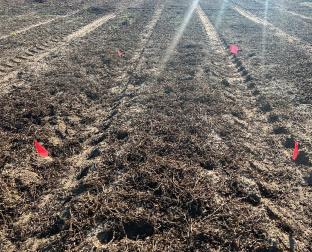
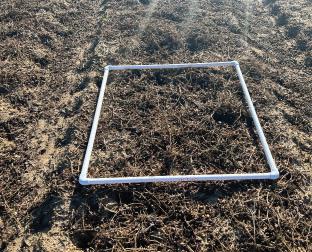
estimate peanut harvest losses. Using steps 1 through 3 in the previous section, count the number of pods on the ground within a known area , but the actual calculations can be skipped. Instead, this information, including row spacing, length and width of the area, and peanut variety/type, along with the total number of pods present in the ground within the sampled area, can be entered into a calculator to obtain an estimate of the harvest losses. Some calculators may require additional information, such as harvest equipment model or frame size, to provide a more accurate estimate.
A web-based tool, Peanut Harvest Loss Calculator, is available from Kelley Manufacturing Co. (KMC) at kelleymfg.com/resources/peanutloss-calculator. Similarly, Peanut Yield Estimator is available online from the Clemson Precision Agriculture team at precisionag.sites.clemson.edu/ Calculators/EstimatePeanutYield.
Regardless of whether someone opts to use the procedure provided
Example Harvest Loss Calculation: The average number of pods counted during multiple samplings across the field using a 6 ft x 6 ft PVC frame was 15. What are the estimated harvest losses, assuming Runner-type peanuts?
(15 × 1.2 × 96) ÷ 36 = 48 lb/ac
Average number of peanuts present on the ground, N = 15
Weight per pod for Runner peanuts, W = 1.2 g Area sampled, A = 36 ft²
The total harvest losses are estimated to be 48 pounds per acre.
here or an online calculator, an important point to remember during peanut harvest loss estimations is that this method provides an estimate of the total aboveground harvest losses, including the losses that have occurred during digging and combining as well as any pod losses due to disease or insect pressure. The method outlined in this publication or the online calculators can also assess aboveground digging losses separately while digging peanuts. However, there could also be an equal number or more pods below the ground, which would need separate measurements and can make assessing belowground losses cumbersome and time consuming.
To assess peanut harvest losses incurred only by the combine during harvest and make necessary adjustments to fine-tune combine settings, a common method also employed by the harvest equipment manufacturers is to throw a relatively flat catch pan or similar device under the material coming out from the back of the combine and count the number of pods in or on the pan. Then, the harvest loss is estimated again similarly by entering the information in the harvest loss formula or an online calculator.
Regardless of the brand and condition (used or new) of the harvest equipment, the essential consideration for peanut growers is to take the time to assess the harvest losses associated with the harvest equipment, especially at the beginning of the season and periodically during the season to avoid any unnecessary yield losses and get the most peanuts out of the fields.
By Joy Crosby
Proper equipment maintenance is key in having an almost trouble free harvest with peanuts. Of course, there can be equipment malfunctions once harvest begins, but taking the time to check equipment prior to harvest and replacing worn out parts will help relieve some stress at the beginning of harvest time.
"It is important for farmers to take time before the crop is ready to harvest to check their equipment and made any needed repairs in advance," says Scott Monfort, University of Georgia Extension peanut agronomist. "Once in the field, farmers should pay attention to detail and readjust as needed based on weather conditions."
Mississippi peanut agronomist Brendan Zurweller, encourages
farmers to look through their digger and make sure they have fresh blades, check the belts and pulleys. Additionally, he encourages farmers to get parts greased up and check the tire pressure on their equipment.
"Harvest time is very important and a critical time trying to get the crop out in a timely manner," says Kris Balkcom, Auburn University peanut specialist.
In some cases, farmers may be interested in updating their equipment for 2025. If a farmer is running a PTO drive, it is hard to really dial in their speed, so Monfort recommends converting to a hydraulic system.
However, Monfort adds, even if a farmer makes the change to a hydraulic system that doesn't mean they can speed up at digging.
"With peanuts, there is a certain speed that is more conducive to making good windrows and not pulling peanuts off the vine while digging," Monfort says. "The new hydraulics make things a lot more streamlined when digging."
It's easier to repair and replace parts prior to harvest. While in the field, all agronomists agree that if farmers don’t monitor their settings, they could see more loose shelled kernels.
"Farmers need to make sure they are pretty in-depth in going through the entire digger and combine," Balkcom says. "The last thing you want to be is broke down and not be able to get the part you need during harvest."
Pre-harvest Checklist
• Check the entire machine for loose or worn parts.
• Make sure the plow shanks are not bent and the digger blades run level.
• Straighten any bent rattler bars.
• Check all bearings and the gear box oil level.
• Check coulters and vine cutters for proper location and condition.
• Align the inversion rods before digging (see operator manual for proper spacing).
• Check for binding or unusual noises by operating the machine briefly.
• Have plenty of extra digger blades on hand.
Harvest Season Checklist
• Check digger blades for proper sharpness and depth.
• Coulters should cut vines leaving no clumps.
• Check the flow of material through the digger. Make sure ground speed is synchronized to produce a smooth flow of vines and soil into the digger.
• Make sure drive belts are tight.
• Check for proper vine inversion and inversion rod spacing.
Pre-harvest Checklist
• Clean inside and out, removing all dirt and residue from the previous crop.
• Check for loose, bent, broken, or missing parts such as pickup springs, cylinder springs and stripper springs.
• Check air lift ducts for holes, lodged objects and dirt buildup.
• Make sure all shields are functional and in good shape.
• Replace the “Slow Moving Vehicle” sign if it is not in good condition.
Harvest Season Checklist
• Adjust settings according to windrow conditions. Remember, no combination of settings will remain optimal throughout a given day.
• Check combined peanuts periodically for LSK’s and foreign material.
• Check chaff passing through the combine for excessive pod loss. If problems occur, adjust stripper spring settings.

by Morgan Shiver
Traveling down Interstate 75 South, it's hard to miss the towering twenty-foot Peanut Monument in Ashburn, Georgia. The monument is a symbol of local heritage and touts Georgia as the leading peanut producing state, bringing pride to Ashburn citizens, peanut growers and supporters of Georgia's peanut industry.
The monument was first created in 1975 and was a tourist attraction until Hurricane Michael caused its fall in 2018. Several individuals, organizations and businesses came together to replace the monument which was reinstalled in 2023. Today, Turner County 4-H is joining forces with AgGeorgia Farm Credit for a community service project with the monument.
Lynn Davis, Turner County Extension coordinator, believes in the importance of teaching agricultural concepts to students at Turner County Schools. Each October, Davis teaches a peanut lesson to an elementary agriculture class to ensure that students gain a grasp on what's happening when they smell the aroma of dirt as peanuts are being harvested or see peanut wagons on the road.
"Just peeling back the layers and letting them see all the different ways that agriculture is tied to their lifethat's the part I want to leave them with," Davis says.
Davis also illustrates the local economic impact to her students, which is generated through both peanuts and the Peanut Monument. Davis explains how an increase in tax dollars could lead to new uniforms, buses, or other school facilities for students.
The Peanut Monument is a local landmark attraction for tourists stopping in Ashburn. Ashley Miller,
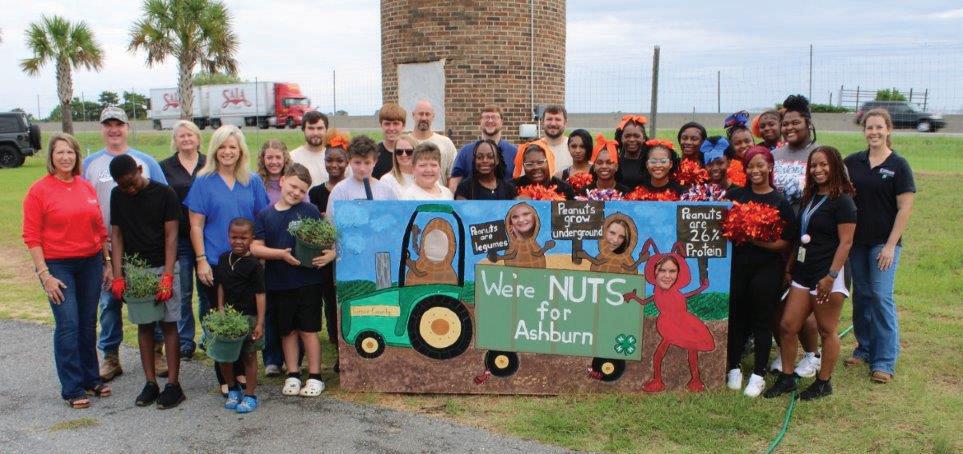
executive director of Turner County Chamber of Commerce, noticed the need for landscaping beautification around the monument and reached out to Davis about having Turner County 4-H help with the landscaping.
"Around the same time, AgGeorgia Farm Credit reached out about a partnership with Turner County 4-H," Davis says. "So, we were able to execute a landscaping project with 4-H and Turner County School students."
AgGeorgia Farm Credit sponsored the landscaping project where Turner County 4-H members and students cleared the overgrown site of the Peanut Monument. During the project, the team planted a perennial peanut known as "Cowboy," which was bred by Wayne Hanna from the University of Georgia. Coordinated by Turner County Extension agent Macie Mosteller, plants were donated by the Turfgrass Breeding team at UGA Tifton, which was a unique collaboration between UGA Extension and UGA Research.
Through a photo-op contest advised by Christy Wray, superintendent of Turner County Schools, Turner County Extension
staff selected winners from Turner County Middle School, who sketched creative designs for a photo-op sign at the Peanut Monument. The goal was to add a fun touch at the Peanut Monument where visitors can stick their head through a sign and take a photo while visiting the attraction.
Looking to the future, Davis anticipates the project will become an annual event in Turner County through collaboration with Turner County Extension, Turner County Schools and AgGeorgia Farm Credit. As this marked the inaugural event, the Turner County Extension staff has big ideas for the future of this project, with hopes to connect visitors with local farmers through QR codes and providing educational materials about peanuts at the site of the Peanut Monument.
The project is a shining example of the impact of youth-adult partnership, displaying the power of a community unifying to promote agriculture. Davis is thankful for the support of local businesses coming together to plant seeds of knowledge in the younger generation, understanding the true impact that resides in youth development.

Field days throughout the summer months provide growers with educational information to assist them with production on their farm. Many of the updates include information on a variety of research projects including variety development, weed, disease and insect management, precision agriculture and more.
Many times the results of the research projects are new findings or updates on new products available for farmers. Also, many of the field days offer continuing education pesticide applicators credit so farmers should make sure they register in advance or complete proper paperwork at the field days in order to receive credit.
The Southeastern Peanut Farmer has compiled a list of the upcoming field days offered throughout the Southeast relating to peanuts or general crop field days.
Aug. 4, 2025 - Mississippi Row
Crop Field Day, Raymond, Mississippi - The field day will be held at the Brown Loam Experiment Station, 1676 Brown Loam Road, Raymond, Mississippi. Registration begins at 8:30 a.m. For more information call 601857-5952.
Aug. 6, 2025 - Southeast Georgia Research & Education Center Field Day, Midville, Georgia - The field day will be held at the research center located at 9638 Highway 56 South, Midville, Georgia. The field day registration begins at 8:30 a.m. and concludes with lunch. Register by calling 478-589-7472.
Aug. 13, 2025 - Southwest Georgia Research & Education Center Field Day, Plains, Georgia - The field day will be held at the research center located at 108 Experiment Station Road, Plains, Georgia. Field day registration begins at 8:00 a.m. and concludes with lunch. Register by calling 229-591-5158.

Farmers view peanut variety trials at the Wiregrass Research and Education Center in Headland, Ala., during the annual field day in 2024.
August 14, 2025 - Florida Peanut Field Day, Marianna, Florida - Field day registration begins at 7:00 a.m. Central Time at the North Florida Research and Education Center, 3925 Highway 71, Marianna, Florida. For more information, call Barry Tillman at 850-526-1617 or Ethan Carter at 850482-9620.
Aug. 15, 2025 - Wiregrass Row
Crop Field Day, Headland, Alabama - The field day begins at 9:00 a.m. Central Time at the Wiregrass Research and Extension Center, 167 State Highway 134 East, Headland, Alabama. For more information, call 334-693-2010.
August 19, 2025 - Florida
Regional Peanut Field Day, Live Oak, Florida - Registration begins at 9:00 a.m. Eastern Time at the North Florida Research and Education CenterSuwannee Valley Farm, 8202 County Road 417, Live Oak, Florida. For more information, call Emily Beach at 386294-1279.
Aug. 21, 2025 - West Florida Row Crop Extension Farm Field Day, Jay, Florida
Field day will begin at 8:00 a.m. and will conclude around 1:00 p.m. Central Time at the West Florida Research and Education Center, 4253 Experiment Drive, Jay, Florida. For more information, call Hardeep Singh at 850-983-7104 or Robin Vickers at 850-983-7134.
Sept. 3, 2025 - Cotton and Peanut Research Field Day, Tifton, Georgia
The field day will be held at the UGA Tifton Campus, Tifton, Georgia. For more information, call 229-3863696 or visit www.gapeanuts.com.
Sept. 23-25, 2025 - Tri-State Peanut Disease Tour
The tour will be held in Tifton, Georgia; Headland, Alabama and Florida. For more information, email Albert Culbreath at spotwilt@uga.edu or call 229-386-3156.

The thirty-seventh annual Georgia Peanut Tour will be held Sept. 16-18, 2025, in Valdosta, Georgia, and the surrounding area. The tour brings the latest information on peanuts while giving a firsthand view of industry infrastructure from production and handling to processing and utilization. Tour stops will be made in several peanut producing counties in South Georgia.
Attendees can expect to see first-hand nearly every aspect of peanut production in the state. This year’s tour hosts many exciting stops including on-farm harvest demonstrations and clinics, as well as, on-farm county research by the University of Georgia Extension Service.
The tour kicks off this year with the Hot Topics Seminar on Sept. 16 at 2:30 p.m. at James H. Rainwater Conference Center in Valdosta, Georgia. The seminar topics include an update on the 2025 Georgia peanut crop and a special focus on supply chain, market dynamics and international challenges facing the peanut industry today and new opportunities.

The Georgia Peanut Commission, University of Georgia-Tifton Campus and Griffin Campus, and the USDA Agricultural Research Service National Peanut Research Lab coordinate the tour.
Hotel accommodations can be made at the host hotel, Hampton Inn & Suites in Valdosta, Georgia, by calling 229-241-1234. Additional
rooms are available at the Fairfield Inn & Suites in Valdosta by calling 229-242-1225. Be sure to ask for the 2025 Georgia Peanut Tour room block when making a reservation. The room block's deadline is Aug. 18, 2025.
Visit georgiapeanuttour.com or contact David West at 229-386-3470 or via email at david@gapeanuts.com for more information
The Georgia Peanut Commission is hosting a photo contest through Oct. 1, 2025, featuring peanut farms from across the state to fill the pages of the 2026 Georgia Peanut Calendar. Photos will also be selected to be used in various promotional projects by GPC throughout the year. Georgia farmers are encouraged to submit their best high-resolution photo from throughout the growing season. Winning entries will be selected for each month of the calendar, as well as the cover page. Below are tips to consider when selecting a photo to enter:
• Make sure the photo is not offensive and avoid photos with large,
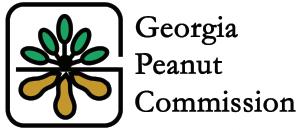
easy to read corporate logos.
• Think about the months of the year and select photos that represent them. For example, land prep work in the winter, planting in the spring, irrigation in the summer and harvest in the fall.
• Make sure photos are taken in horizontal format, so they will fill the entire page of the calendar.
• Showcase your family (young and old) and what being a Georgia
peanut farmer means to you.
• Choose a photo you feel helps others understand more about how you care for the crop they love.
Photo entries must be taken during the 2023, 2024 or 2025 peanut crop year and feature peanut production. Entries must also be high resolution (300 dpi), horizontal and not taken with a phone; otherwise, they may be disqualified.
Please submit photos in .jpg format and submit them with the online entry form provided online at gapeanuts.com by Oct. 1, 2025, for consideration. Winning entries will be entered for a chance to win a Visa gift card. Visit gapeanuts.com for complete details

The 29th annual USA Peanut Congress, co-hosted by the American Peanut Council and the American Peanut Shellers Association, was held June 9-12, 2025, in Nashville, Tennessee. During the four-day conference, leaders from all sectors of the peanut industry discussed export markets, sustainability, research and the upcoming peanut crop.
Attendees heard from experts on topics including an economic and policy outlook, regulatory updates, and global geopolitics and the impact on U.S. ag inputs. Additionally, attendees learned more about peanut nutrition in the context of consumer perception, peanut allergy research and education, as well as information on the 2025 peanut crop.
The American Peanut Council presented awards to five leaders who have demonstrated significant commitment to the peanut industry.
APC's Hall of Fame Award was presented to Anne-Marie DeLorenzo of Mars Wrigley. DeLorenzo is honored for her visionary leadership in advancing the cultivation and adoption of high oleic peanuts, a transformation that has significantly enhanced the global competitiveness of U.S. peanuts.
A tireless advocate, mentor and strategist, DeLorenzo has served on the APC Board of Directors for 15 years, including terms as chairwoman, most recently as APC’s 2025 chair, and has been instrumental in founding APC's Sustainability Committee and supporting the Peanut Genomics Initiative. Her legacy is one of strategic insight, industry unity and unwavering commitment.
The APC Hall of Fame Award recognizes individual contributions to the peanut industry and, specifically, service to the American Peanut
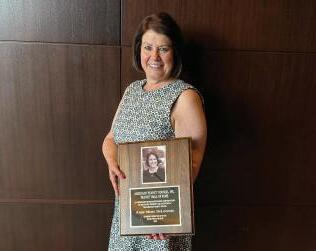
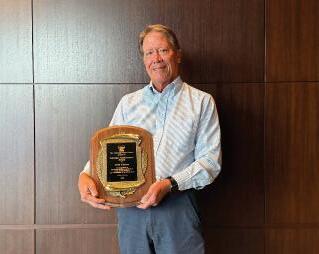

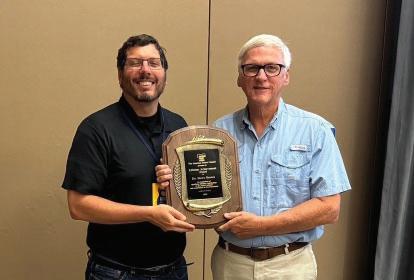
Council, which have been significant, substantial and long-standing.
The Lifetime Achievement was awarded to Steve Brown, executive director of the Peanut Research Foundation, Tim Brenneman, plant pathologist at the University of Georgia, and Dell Cotton, former executive director of the Virginia Peanut Growers Association.
Steve Brown is recognized for his lifelong contributions to peanut science and extension. As executive director of The Peanut Research Foundation, Brown has led groundbreaking initiatives such as the Peanut Genomics Initiative, enabling marker-assisted selection for breeders. With more than 30 years in cooperative extension and
leadership roles at Auburn University and the University of Georgia, Brown's work has significantly advanced pest management, research coordination and education across the peanut sector.
Tim Brenneman has been a driving force in peanut pathology for nearly four decades. As a University of Georgia professor, his translational research has revolutionized disease management through innovative fungicide programs, seed treatment development and cultivar resistance strategies. From twin-row planting to Peanut-Rx, Brenneman's practical, science-based solutions have enhanced yield, sustainability and profitability for growers. A mentor and prolific researcher, he is celebrated nationally and internationally for his enduring impact.
Dell Cotton is recognized for a career of steadfast service to Virginia's peanut growers. As executive director of the Virginia Peanut Growers Association, Cotton's leadership helped sustain the region's peanut farming community after the loss of the federal quota system. Respected for his deep knowledge, humility and tireless advocacy, Cotton has strengthened the state's peanut industry through decades of dedicated service on countless boards and committees.
APC's Lifetime Achievement Award honors individuals who have reached the pinnacle of their careers in the peanut industry. The award recognizes individuals who have made extraordinary and sustained contributions to the peanut industry over a lifetime, including a history of involvement and impact on the industry and their communities.
Barry Tillman, professor and peanut breeder at the University of Florida, was awarded the 2025 Peanut Research and Education Award, sponsored by Bayer CropScience.
Since joining the University of Florida in 2004, Tillman has continued the institution's legacy of innovation, releasing seven high-performing peanut cultivars—five high-oleic and two normal oleic—all with high yield, multiple disease resistances and superior grade. His research also addresses critical traits such as drought tolerance, seed viability and seedling vigor, while providing handson training to graduate students.
The PREA award recognizes individuals for their outstanding contributions to peanut research and education.
"These individuals have helped shape the future of peanuts in the United States and beyond," says Richard Owen, APC president and CEO. "Their leadership, science and service are foundational to the continued success of our industry."
The Peanut Research Foundation recently announced the appointment of Keith Rucker as its new executive director. A respected agricultural researcher with deep roots in the peanut industry, Rucker will officially assume the role on June 10.
Rucker brings more than three decades of experience in agricultural science, most recently serving at Bayer CropScience from 2009 to 2024. His career has also included roles with the University of Georgia's Cooperative Extension Service, Progro, Inc. and Gold Kist, Inc.

"Keith brings an exceptional blend of scientific expertise, industry experience and a genuine passion for peanuts that makes him an ideal leader for The Peanut Research Foundation," says Chris Liebold, chair of The Peanut Research Foundation. "His proven track record in agricultural research and deep understanding of the peanut industry will be invaluable as we continue advancing innovation to benefit the peanut community."
He succeeds Steve Brown, who is retiring after a decade of leadership at TPRF. Under Brown's direction, the foundation completed Phases 1 and 2 of the groundbreaking Peanut Genomics Initiative. These efforts led to the full mapping of the peanut genome and the advancement of Marker-Assisted Selection. Congratulations to Georgia peanut farmer Billy Senkbeil for being featured as the Keynote Speaker during the 2025 Southern Peanut Growers
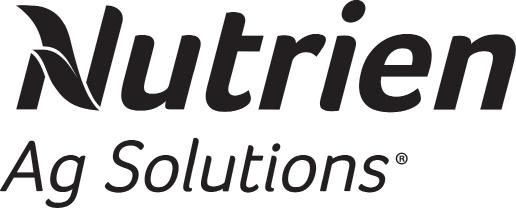
By Robert L. Redding Jr.
The U.S. House of Representatives voted to pass the final version of H.R. 1, the One Big Beautiful Bill Act, in a 218-214 vote on July 3, 2025. This follows the U.S. Senate passage of the legislation in a in a 51-50 vote Tuesday, July 1, with Vice President JD Vance casting the vote required to break the tie. The United States Peanut Federation (USPF) applauds the U.S. Senate and U.S. House of Representatives for working diligently to pass this legislation and send it to the President’s desk for final approval.
The U.S. House Agriculture Committee and U.S. Senate Agriculture Committee both prioritized many typical Farm Bill provisions to be included in this budget legislation package, additions which focused on investments in rural America. The final legislation included
meaningful provisions for the peanut industry, including an increase in the reference price for the Price Loss Coverage (PLC) program, a voluntary base acres update, a marketing loan increase, and modified payment limitations that reflect increased costs of production.
Specifically, this legislation:
• Increases the peanut reference price from $535/ton to $630/ton, beginning with the 2025 crop year
• Provides an additional 30 million new base acres, beginning with the 2026 crop year
• Increases the peanut marketing loan from $355/ton to $390/ton, beginning with the 2026 crop year
• Increases payment limitations from $125,000 to $155,000 per entity
• Includes a separate peanut
Year 2026 Appropriations Update
On June 11, the U.S. House Appropriations Committee advanced numerous subcommittee allocations for Fiscal Year 2026. The measure was approved with a vote of 35 to 28. For the Agriculture, Rural Development, Food and Drug Administration, and Related Agencies subcommittee, $25,523,000,000 was allocated.
On June 23, the U.S. House Appropriations Committee met to consider the Fiscal Year 2026 Agriculture, Rural Development, Food and Drug Administration, and Related Agencies Appropriations Act. The measure was approved by the Committee with a vote of 35 to 27.
The approved bill report included the following provisions for the peanut industry:
• Peanut Nutrition Research: Provides $3 million
• Peanut Aflatoxin Research: Provides $4 million
Agriculture Subcommittee
Chairman Andy Harris, R-Maryland, says, "The Agriculture, Rural Development, Food and Drug Administration, and Related Agencies Appropriations Act reflects a clear, conservative commitment to fiscal responsibility while ensuring that America's farmers, ranchers, and rural communities remain a top priority. This legislation strengthens agricultural research, supports rural businesses and infrastructure, and safeguards our food and drug supply."
The U.S. Senate Committee on Appropriations markup for the Agriculture, Rural Development, Food and Drug Administration, and Related Agencies bill is scheduled for Thursday, July 10.

payment limit set at $155,000 per entity
USPF commends the efforts of Congressional agricultural leaders for working tirelessly to protect peanut industry provisions and ensure these meaningful policies were included in the final legislation. During the U.S. Senate approval process, the peanut industry and other agriculture commodity industries faced a challenge with an amendment offered by U.S. Senator Chuck Grassley, R-Iowa, to restrict payment limits. USPF joined over 40 agriculture groups in signing a letter to Senate leadership to oppose the amendment, and on June 30, Senator Grassley withdrew his amendment.
The final passage of the bill took place on July 3, with the bill sent to President Trump's desk to be signed into law on July 4.
U.S. Peanut Federation signs FY26 Food for Peace Letter
More than 65 agricultural organizations joined in sending a letter, June 30, to U.S. Senate Committee on Appropriations Subcommittee on Agriculture Chairman John Hoeven and Ranking Member Jeanne Shaheen on the U.S. Department of Agriculture Food for Peace program.
The letter stated, "We would like to express our greatest support for including language to transfer our flagship international food aid program Food for Peace to the U.S. Department of Agriculture (USDA) in the FY26 agriculture spending bill. Given the current opportunity to restructure the program, we believe that the best home for Food for Peace is with USDA."
House Agriculture Committee's Agricultural Labor Working Group (ALWG)
• During the 118th Congress, Chairman Glenn "GT" Thompson, R-Pennsylvania, and Ranking Member David Scott, D-Georgia, created the bipartisan group to focus on the agriculture workforce. The group's co-chairs are Reps. Rick Crawford, R-Arkansas, and Don Davis, D-North Carolina.
• A final report with policy recommendations was released on March 7, 2024 and provided to the U.S. House Judiciary Committee.
H.R. 3227 - The Farm Workforce Modernization Act (FWMA)
• This legislation would reform the H-2A program to provide more flexibility for employers, while ensuring critical protections for workers.
o Establishes a program for agricultural workers in the United States to choose to earn legal status through continued agricultural employment and contribution to the U.S. agricultural economy.
o Focuses on modifications to make the program more responsive and user-friendly for employers and provides access to the program for industries with year-round labor needs.
• This bill was introduced by Reps. Dan Newhouse, R-Washington, Zoe Lofgren, D-California, Mike Simpson, R-Idaho, Jim Costa, D-California, David Valadao, R-California, and Adam Gray, D-California.
• The FWMA is similar to the bill introduced in the last Congress.
H.R.1624 - The Supporting Farm Operations Act
• This legislation would freeze the adverse effect wage rate — the effective minimum wage for H-2A migrant farm workers — for two years, until the end of 2026.
• This bill was introduced by Rep. John Moolenaar, R-Michigan, and may be included in the U.S. House Appropriations Subcommittee on Labor, Health and Human Services, and Education, during the appropriations bill markup.
Alternate House Democrat Proposals
• Minority Leader Hakeem Jefferies, D-New York, appointed a working group to prepare a broad-based immigration reform package, which is set to include H-2A reform as well.
Alternate House Republican Proposals
• Rep. Derrick Van Orden, R-Wisconsin, says he's been working with Trump administration officials — specifically, Agriculture Secretary Brooke Rollins, Labor Secretary Lori Chavez-DeRemer and director of U.S. Immigration and Customs Enforcement Tom Homan — on a proposal to alter work authorization programs such as H-2A and H-2B.
The U.S. Senate Finance Committee released their legislative text for the Senate’s budget reconciliation package on June 16. The proposed package includes the following key agricultural provisions:
• Exclusion of interest on loans secured by rural or agricultural real property; Excludes 25 percent of interest income derived from qualified real estate loans.
• The Section 199A deduction for qualified business income would become permanent at the 20 percent level.
• Permanently extends the estate tax exemption
• Increases business expensing allowances.
USTR Ambassador Jamieson Greer Meets With European Trade Commissioner
United States Trade Representative Ambassador Jamieson Greer met with European Trade Commissioner Maroš Šefčovič to discuss ongoing trade negotiations between the United States and the European Union during the OECD trade ministerial, June 4.
"Last week, the European Union provided the United States with a credible starting point for discussions on reciprocal trade, and I am pleased that negotiations are advancing quickly," says Ambassador Greer. "Today's meeting in Paris, which occurred alongside technical talks by our teams in Washington, was very constructive and indicates a willingness by the EU to work with us to find a concrete way forward to achieve reciprocal trade. I look forward to continued constructive engagement in the coming days and weeks."
Additionally, on March 10, the U.S. Peanut Federation sent a letter to USTR Ambassador Jamieson Greer in response to USTR's "Request for Comments to Assist in Reviewing and Identifying Unfair Trade Practices and Initiating All Necessary Actions to Investigate Harm from Non-Reciprocal Trade Arrangements."
Included in the letter, "Our request is that U.S. peanuts be inspected at a much lower rate, one that is comparable to that of our export competitors, with the goal of re-obtaining Pre-Export Certification in the EU. This would level the playing field for U.S. peanuts exported to the EU. We greatly appreciate USTR investigating this issue on behalf of the U.S. peanut industry. The U.S. peanut industry is resilient and has proven to be innovative throughout its history. We look forward to working with USTR on this issue with the goal of fair-trade practices in the EU market."

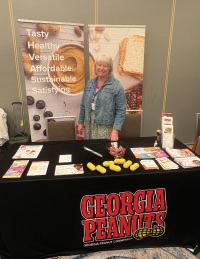
Southern Peanut Growers (SPG) exhibited at the annual meeting of the Georgia Chapter of the American Academy of Pediatrics Conference, June 12 – 14, 2025, in Amelia Island, Florida. Conference attendance was their largest ever with more than 220 pediatricians in attendance. This year also boasted the highest ever number of pediatricians practicing outside the state of Georgia.
Leslie Wagner, executive director of SPG, staffed the exhibit with materials focusing on early introduction to prevent peanut allergy and nutrition materials for kids. Wagner also distributed QR code cards where doctors can order materials to give to parents on early introduction and nutrition for kids, which already has resulted in some orders.
by Chef Duane Nutter
Ingredients
2 each 5-6-oz. rainbow trout filets (or sole or flounder)
2 Tablespoons olive oil
1/4 teaspoon salt
1/4 teaspoon black pepper
2 Tablespoons cornstarch
4 Tablespoons unsalted butter, divided
1/4 pound blanched green beans
1/3 cup chopped peanuts
2 teaspoons fennel seeds, toasted and crushed
2 teaspoons coriander seeds, toasted and crushed
1/2 each lemon, juiced (1.5 Tablespoons lemon juice)
2 Tablespoons Italian parsley
2 Tablespoons dill
1 Tablespoons drained capers frisée salad greens
Southern Peanut Growers sponsor Chef Duane Nutter's Cookbook Tour
Chef Duane Nutter, a favorite chef of Southern Peanut Growers, has a new cookbook, "Cutting Up In the Kitchen: Food and Fun from Southern National's Chef Duane Nutter." The cookbook offers more than 100 Southern-leaning recipes composed of familiar ingredients that are often infused with international flavors. He is currently on a book-signing tour where he prepares some of his favorite peanut dishes, including Trout Nutter-dine, sporting a peanut hat and apron. The tour began on April 28 at The National Cornbread Festival in South Pittsburg, Tennessee, and concludes on October 20 in Nashville, Tennessee, with 17 total stops including New York City, multiple events in Georgia, North Carolina, Mississippi, South Carolina Kentucky and Alabama.

Chef Duane Nutter reviews his cookbook during the book-signing tour in the United States this year.
Directions
Pat trout dry with paper towels then season with salt and pepper. Lightly dust both sides in corn starch.
Heat oil and 1 Tablespoon of the butter in a large cast iron skillet over medium heat. When butter starts to shimmer, add trout skin side down and cook undisturbed or 3-4 minutes. Flip and cook another 2-3 minutes or until golden. Divide blanched green beans between two serving plates and transfer fish on top of green beans.

Wipe excess oil out of the pan with a paper towel to prevent over cooking any remaining corn starch from cooking the fish. Return pan to medium heat and melt the remaining 3 Tablespoons butter. Add the chopped peanuts, fennel, and coriander and let them cook for a couple of minutes, stirring frequently until the butter starts to brown. Turn off heat and add lemon juice, parsley, dill, and capers.
Top the fish with frisée salad greens and dress with the butter and seasoning mixture from the pan.


